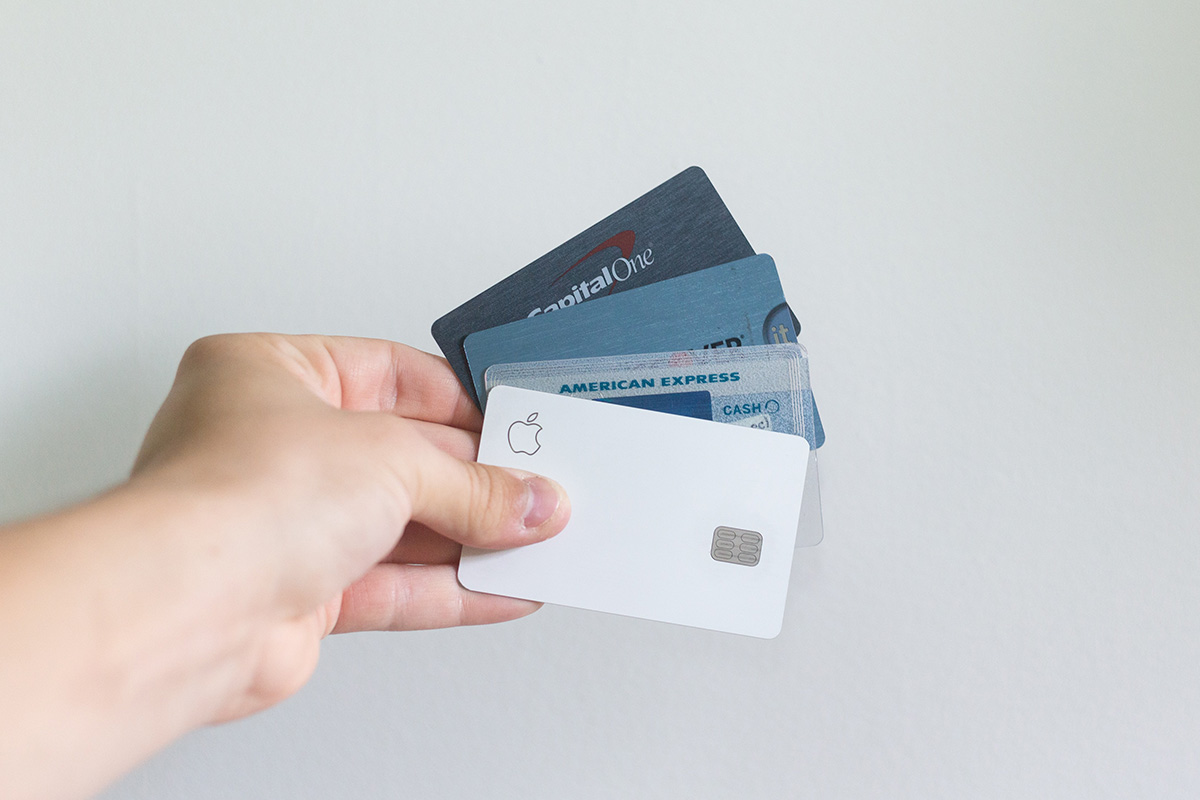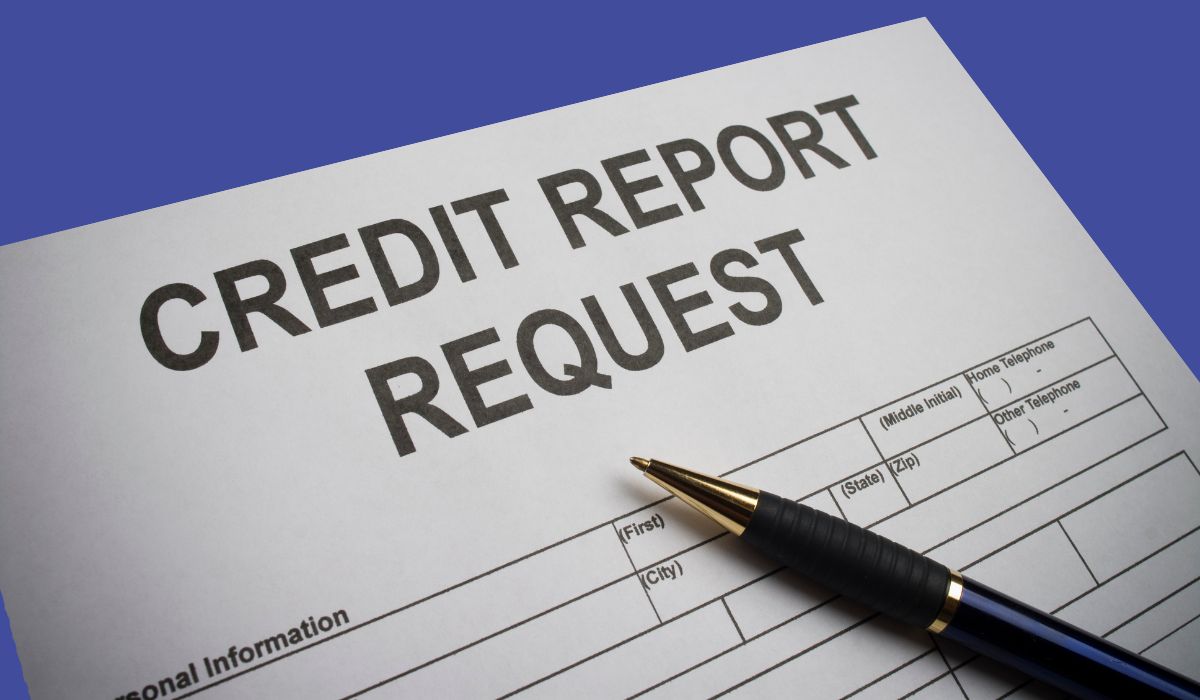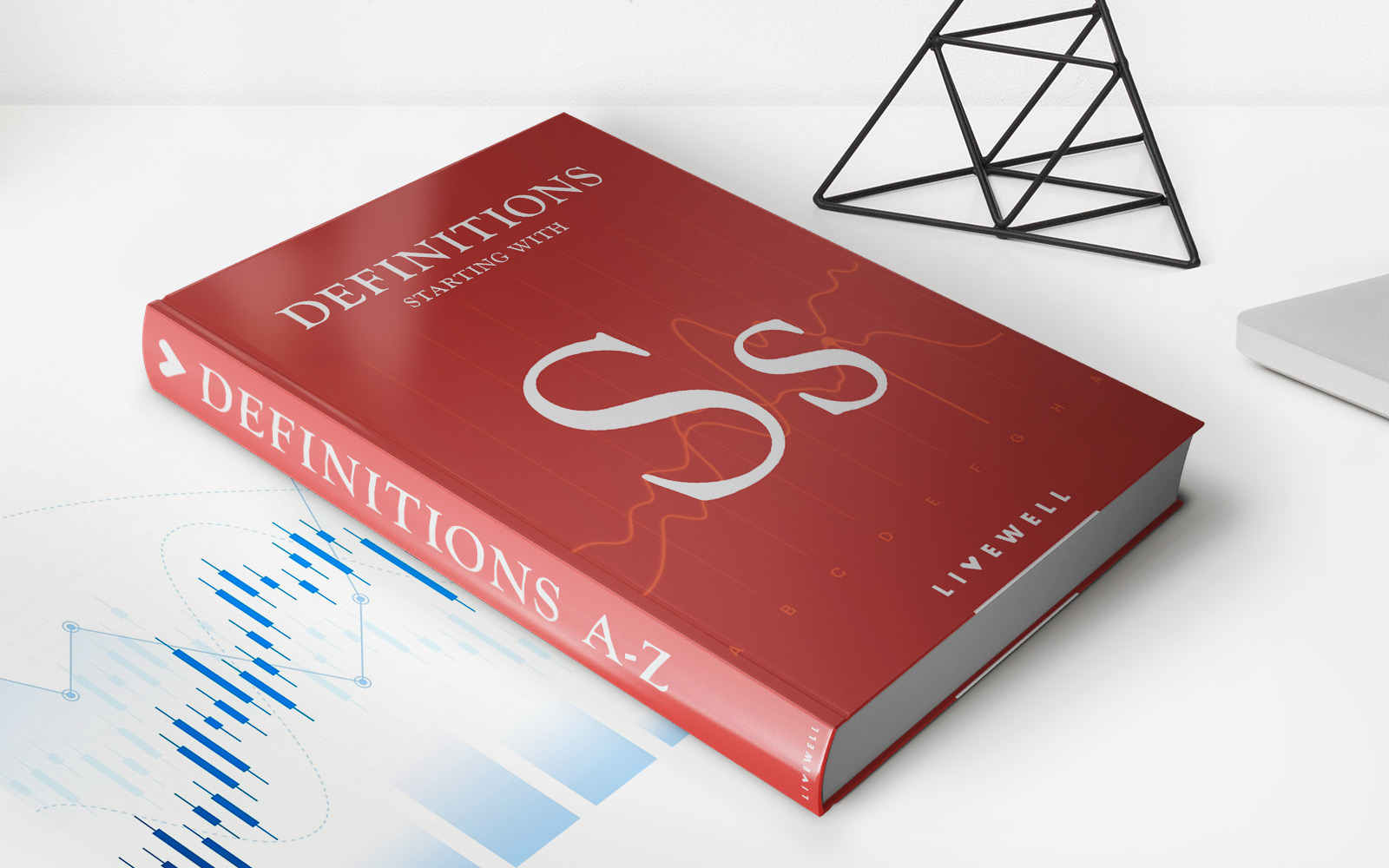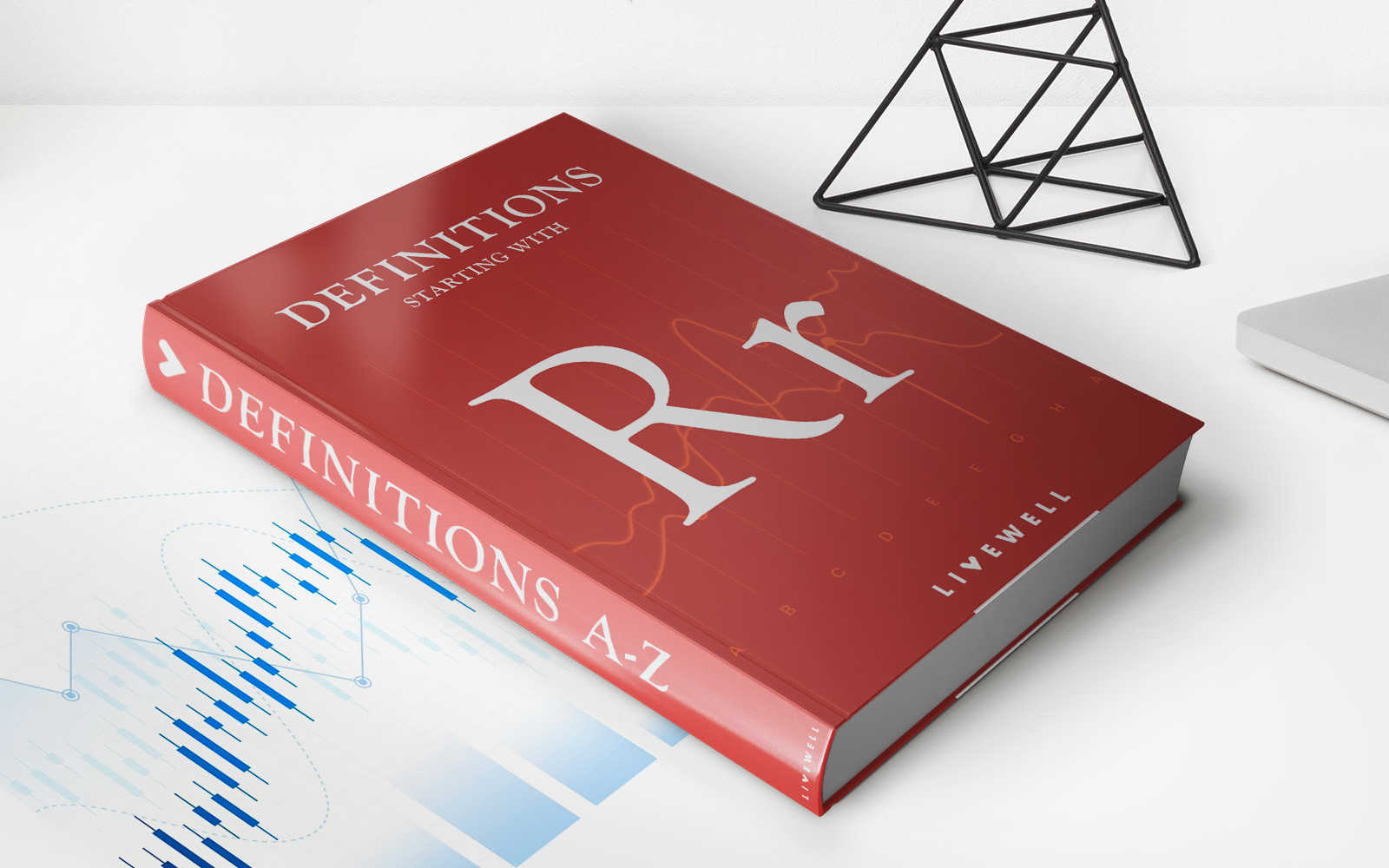

Finance
What Is SYNCB On My Credit Report
Modified: March 5, 2024
"Curious about the SYNCB entry on your credit report? Learn what it means for your finances and how it might impact your credit score."
(Many of the links in this article redirect to a specific reviewed product. Your purchase of these products through affiliate links helps to generate commission for LiveWell, at no extra cost. Learn more)
Table of Contents
Introduction
When you review your credit report, you may come across various entries, some of which may be unfamiliar to you. One such entry that often confuses individuals is SYNCB. If you have ever wondered what SYNCB on your credit report means, you are not alone.
SYNCB refers to Synchrony Bank, which is one of the largest issuers of private label credit cards in the United States. It partners with various retailers to provide financing options to consumers. Chances are that if you have a store credit card, such as those offered by Amazon, Walmart, or Lowe’s, the abbreviation SYNCB may appear on your credit report.
Understanding the implications of SYNCB on your credit report is crucial to managing your financial reputation effectively. In this article, we will explore what SYNCB is, how it appears on your credit report, why it is listed there, whether it is legitimate, how it affects your credit score, and what steps you can take if you believe SYNCB is incorrect or not yours.
What is SYNCB?
SYNCB stands for Synchrony Bank, a well-known financial institution that specializes in providing private label credit cards to consumers. It is one of the largest issuers of store credit cards in the United States, partnering with various retail giants to offer financing options to their customers.
Synchrony Bank works with a wide range of retailers across different industries, including home improvement, electronics, fashion, and more. Some popular brands that have partnered with SYNCB include Amazon, Walmart, Lowe’s, Gap, and PayPal, among many others.
When you apply for a store credit card, the chances are that the credit card is issued by SYNCB. In other words, Synchrony Bank is the financial institution behind the credit card you use for shopping at your favorite retail stores.
Store credit cards often come with perks and rewards programs designed to incentivize frequent shoppers. These cards are primarily used for making purchases within the specific retailer’s network. For example, if you have an Amazon store credit card issued by SYNCB, you can use it to make purchases on Amazon.com and earn rewards or take advantage of special financing offers.
While SYNCB is primarily associated with store credit cards, it also offers other financial products such as personal loans and savings accounts. However, its main focus is on the private label credit card market.
Now that you have a better understanding of what SYNCB represents, let’s delve into how it appears on your credit report and why it is listed there.
How does SYNCB appear on my credit report?
When SYNCB appears on your credit report, it is typically listed as “SYNCB” followed by the name of the retailer associated with the store credit card. For example, if you have a Walmart store credit card issued by SYNCB, it may appear on your credit report as “SYNCB/Walmart” or “SYNCB/Walmart Credit Card.”
It’s important to note that each retailer may have a slightly different way of listing SYNCB on your credit report, but the general format includes the abbreviation “SYNCB” followed by a forward slash and the name of the retailer or the associated credit card.
In addition to the retailer’s name, the SYNCB entry on your credit report will also provide information about your account, such as the account number, the current balance, the credit limit, payment history, and any delinquencies or late payments.
It’s advisable to review your credit report periodically to ensure the accuracy of the information listed. This allows you to identify any discrepancies or errors that may negatively impact your creditworthiness.
Now that you understand how SYNCB appears on your credit report, let’s explore why it is listed there in the first place.
Why is SYNCB on my credit report?
The presence of SYNCB on your credit report indicates that you have a store credit card or another financial product associated with Synchrony Bank. SYNCB is listed on your credit report because it serves as the issuer of these credit accounts and is responsible for reporting your payment history and credit utilization to the credit bureaus.
When you apply for a store credit card or other financing options offered by retailers in partnership with Synchrony Bank, your creditworthiness is evaluated. If approved, SYNCB opens a credit account in your name, and the details of this account are reported to the credit bureaus.
By reporting your credit activities to the credit bureaus, SYNCB helps build your credit history. Timely payments and responsible credit management can positively impact your credit score over time.
Furthermore, SYNCB’s presence on your credit report allows other lenders and financial institutions to assess your creditworthiness when you apply for new credit. They can review your SYNCB account information to evaluate your payment behavior, credit utilization, and any delinquencies or defaults.
It’s worth noting that having SYNCB on your credit report is not necessarily a negative thing. On the contrary, if you make payments on time and maintain a low credit utilization ratio, having a positive SYNCB account can contribute to building a strong credit profile.
Now that you understand why SYNCB appears on your credit report, let’s discuss whether SYNCB is a legitimate entry and how it can impact your credit score.
Is SYNCB a legitimate entry on my credit report?
Yes, SYNCB is a legitimate entry on your credit report. It represents Synchrony Bank, a well-established financial institution specializing in providing store credit cards and financing solutions to consumers. If you have a store credit card issued by SYNCB or have utilized their other financial products, it is perfectly normal to see SYNCB listed on your credit report.
Synchrony Bank has been in operation for several decades and has built a strong reputation in the financial industry. It is a trusted partner for many popular retailers, offering tailored financing options to their customers.
When SYNCB appears on your credit report, it signifies that you have an active credit account with Synchrony Bank, and the information associated with that account such as your payment history, credit limit, and outstanding balances is being reported to the credit bureaus.
However, it’s essential to regularly monitor your credit report to ensure that the information reported by SYNCB is accurate and up-to-date. Mistakes or inaccuracies on your credit report can potentially harm your creditworthiness. If you notice any discrepancies or unfamiliar accounts listed under SYNCB, it is advisable to investigate and take appropriate action to rectify the situation.
In summary, SYNCB is a legitimate and valid entry on your credit report if you have an account with Synchrony Bank through a store credit card or another financial product they offer.
Next, let’s explore how SYNCB’s presence on your credit report can impact your credit score.
How does SYNCB affect my credit score?
SYNCB, like any other credit account, can have an impact on your credit score. The way it affects your credit score depends on several factors, primarily your payment history, credit utilization, and the overall management of your SYNCB account.
Payment history plays a significant role in determining your credit score. Making timely payments on your SYNCB account contributes to a positive payment history, which can boost your credit score. On the other hand, late payments or defaulting on your SYNCB account can have a negative impact on your credit score.
Another factor to consider is credit utilization, which refers to the percentage of your available credit that you are currently using. If you have a high balance or consistently carry a significant debt on your SYNCB account, it can negatively impact your credit score. It’s generally recommended to keep your credit utilization ratio below 30% to maintain a healthy credit score.
In addition to payment history and credit utilization, the length of your credit history and the mix of credit types also play a role. SYNCB’s presence on your credit report can contribute positively to the length of your credit history, especially if you have held the account for an extended period. Having a diverse mix of credit accounts, including a store credit card like those offered by SYNCB, can also be beneficial for your credit score.
It’s important to note that while SYNCB itself does not have a direct impact on your credit score, the way you manage your SYNCB account and the associated factors, such as payment history and credit utilization, can influence your score.
By making timely payments, keeping balances low, and managing your SYNCB account responsibly, you can maintain or improve your credit score over time.
Now that we’ve explored how SYNCB can impact your credit score, let’s discuss the steps you can take if you need to dispute SYNCB on your credit report.
How to dispute SYNCB on my credit report?
If you believe there is an error or discrepancy associated with SYNCB on your credit report, it is crucial to take the necessary steps to dispute it. Here is a step-by-step guide on how to dispute SYNCB on your credit report:
- Review your credit report: Obtain a copy of your credit report from one of the major credit bureaus – Equifax, Experian, or TransUnion. Carefully review the SYNCB entry and make note of any errors or inaccuracies.
- Gather supporting documentation: Collect any relevant proof or documentation to support your dispute. This could include payment receipts, statements, or any correspondence with SYNCB regarding your account.
- File a dispute: Contact the credit bureau(s) reporting the SYNCB entry and file a dispute. You can typically do this online, through their website, or by mailing a written dispute along with the required documents. Clearly explain the nature of your dispute and provide any evidence you have to support your claim.
- Notify SYNCB: In addition to disputing with the credit bureaus, it is also recommended to directly contact SYNCB to inform them of the dispute. Provide them with the same information you provided to the credit bureau, including any supporting documentation.
- Monitor the investigation: The credit bureau will investigate your dispute within a certain timeframe, typically 30 to 45 days. During this period, stay vigilant and regularly check the status of your dispute through the credit bureau’s online portal or by contacting their customer service.
- Review the updated credit report: Once the investigation is complete, the credit bureau will update your credit report and notify you of the outcome. If the SYNCB entry was found to be incorrect or invalid, it should be removed or corrected on your credit report.
- Follow up if needed: If the dispute is not resolved to your satisfaction or if the SYNCB entry reappears on your credit report, you have the right to escalate the issue. Contact the credit bureau and SYNCB again, providing additional information or evidence to support your case.
It’s important to note that disputing SYNCB or any other entry on your credit report requires patience and persistence. Keep copies of all communication and documentation for your records, and follow up regularly to ensure that the dispute is resolved accurately.
Should you encounter any challenges or difficulties during the dispute process, you may consider seeking assistance from a credit counseling agency or consulting a legal professional specializing in credit and finance matters.
Now that we’ve discussed the steps to dispute SYNCB on your credit report, let’s explore what steps to take if you find SYNCB listed on your report but it is not yours.
Steps to take if SYNCB is not yours
Discovering an unfamiliar SYNCB entry on your credit report can be concerning, especially if you have never had any dealings with Synchrony Bank or the associated retailer. If you find SYNCB listed on your credit report and it is not yours, follow these steps:
- Double-check for errors: Verify that the SYNCB entry doesn’t belong to you by thoroughly reviewing your credit report. Ensure that there hasn’t been a mix-up or confusion with someone else who shares a similar name or a clerical error that has led to the incorrect entry.
- Dispute with the credit bureaus: Contact the credit bureaus reporting the SYNCB entry and file a dispute. Provide them with the details of the account, stating that it is not yours, and request its removal from your credit report. Include any supporting documentation, such as identity verification or evidence that you have never had a relationship with SYNCB.
- Reach out to SYNCB: In addition to disputing with the credit bureaus, directly contact SYNCB to inform them that the account listed on your credit report is not yours. Request their cooperation in investigating the matter and removing the entry from your credit file. Provide them with any supporting documentation to support your claim.
- Follow up on the investigation: Monitor the progress of the investigation by the credit bureaus and SYNCB. Stay in touch with both parties, providing any additional information or documentation they may require. Be persistent in your efforts to have the incorrect SYNCB entry removed from your credit report.
- Monitor your credit: Regularly monitor your credit report to ensure that the erroneous SYNCB entry has been resolved. Once removed, check that your credit score and overall credit profile accurately reflect your financial history.
- Consider a fraud alert or credit freeze: If you suspect identity theft or fraudulent activity related to the SYNCB entry, you may want to place a fraud alert or consider a credit freeze on your credit file. These measures can provide an extra layer of protection and prevent unauthorized accounts from being opened in your name.
If you encounter challenges or difficulties during the process, don’t hesitate to seek guidance from a credit counselor or consult with an attorney specializing in credit and identity theft issues. They can provide expert advice and assist you in resolving the situation effectively.
Remember, taking prompt action to dispute an incorrect SYNCB entry is crucial to maintaining the accuracy of your credit report and protecting your financial reputation.
Now that we’ve covered the steps to take if SYNCB is not yours, let’s conclude the article.
Conclusion
SYNCB, or Synchrony Bank, is a legitimate entry on your credit report if you have a store credit card or other financial product associated with them. It represents the financial institution behind these accounts and is responsible for reporting your credit activity to the credit bureaus.
Understanding SYNCB’s presence on your credit report is crucial for managing your financial reputation effectively. By making timely payments, keeping balances low, and managing your SYNCB account responsibly, you can positively impact your credit score over time.
If you believe there is an error or discrepancy associated with SYNCB on your credit report, it’s important to take action. Follow the appropriate steps to dispute the entry with the credit bureaus and reach out directly to SYNCB to resolve the issue. Regularly monitor the progress of the dispute and ensure the correction is reflected in your credit report.
In cases where SYNCB appears on your credit report but is not yours, it’s essential to investigate and take immediate action. File a dispute with the credit bureaus and inform SYNCB directly. Provide any necessary documentation and follow up diligently to have the incorrect entry removed.
Maintaining an accurate credit report is vital for your financial well-being, as it influences your ability to get credit and secure favorable interest rates. By understanding SYNCB and actively managing your credit accounts, you can help build a strong credit profile and achieve your financial goals.
Remember to review your credit report regularly, make timely payments, and monitor your credit utilization. If you encounter challenges or need assistance, consider seeking guidance from credit counseling agencies or legal professionals who specialize in credit and finance matters.
By staying informed and taking proactive steps, you can navigate the world of SYNCB on your credit report and ensure a solid financial foundation.














